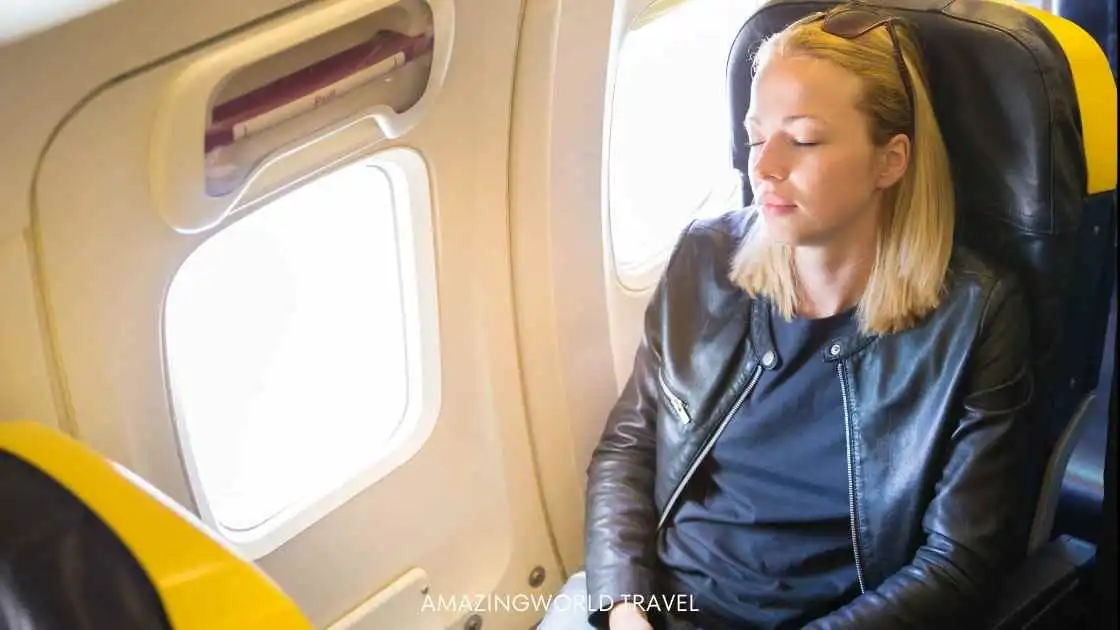How do I Plan a multi-country trip | 15 top tips and tricks?
Table of Contents
Toggle
Are you yearning for an extraordinary adventure that transcends borders and expands horizons? The allure of a multi-country trip beckons, promising a tapestry of cultures, landscapes, and memories to treasure for a lifetime.
But before you set sail on this thrilling odyssey, charting a course through diverse lands and captivating experiences, it’s essential to master the art of planning. Fear not, fellow wanderer, for we have assembled a treasure trove of 15 top tips and tricks to ensure your multi-country expedition is nothing short of extraordinary!
1. Choosing Destinations
When planning a multi-country trip, the first and most crucial step is selecting the destinations you want to visit. Consider countries that complement each other in terms of culture, interests, and geographical proximity. Look for destinations offering diverse experiences, from bustling cities to serene landscapes and historical sites. For example, if you’re interested in exploring ancient history, consider a trip that includes Egypt, Greece, and Italy.
Research each country’s top attractions, local customs, and safety conditions. Make a list of must-visit places in each country and determine whether the activities you want to indulge in are available in those destinations. Also, take into account the time required to travel between countries and the logistics involved.
2. Duration and Pace
Once you have your destination list, it’s essential to set a realistic duration for your multi-country trip. Avoid the temptation of trying to cover too many countries in a short period, as it can lead to a rushed and exhausting experience. Instead, plan for a comfortable duration in each country that allows you to immerse yourself in the local culture and truly enjoy your visit.
Consider factors like the size of each country, the number of places you wish to explore, and the transportation time between them.
Allocate more time to countries with a wealth of attractions and diverse experiences. A well-paced trip will ensure you have ample time to explore major sights, delve into local experiences, and even leave room for unexpected adventures.
3. Visa and Entry Requirements
Visa and entry requirements vary from country to country, so it’s crucial to research the specific rules for each destination on your itinerary. Some countries offer visa-free entry for certain nationalities, while others require visas obtained in advance or upon arrival.
Start the visa application process well ahead of your travel dates, as it can sometimes take time to gather all the necessary documents and complete the formalities. Keep track of visa validity dates to ensure your travel plans align with your visa duration.
4. Seasons and Weather Considerations
Seasons and weather can significantly impact your travel experience. Be mindful of the climate in each country and plan your trip to avoid extreme weather conditions that might hinder your sightseeing or outdoor activities.
For instance, if you’re visiting Europe, you might prefer the pleasant temperatures of spring or autumn to the scorching heat of summer or the chill of winter. Consider the monsoon seasons in certain regions and check if any natural events, like typhoons or hurricanes, could affect your travel plans.
Researching the best time to visit each country will help you make the most of your journey and enjoy comfortable weather conditions throughout your trip.
5. Creating a Flexible Itinerary
While having a rough itinerary is essential for organizing your trip, it’s equally important to maintain flexibility in your plans. A rigid schedule can be counterproductive during a multi-country trip as it may limit your ability to explore off-the-beaten-path gems or stay longer in places that captivate you.
Create a flexible outline that outlines your major destinations and timeframes but allows for spontaneity. Be open to serendipitous encounters and recommendations from fellow travelers or locals. Embrace the idea that some of the most memorable experiences often come from unplanned moments.
6. Budgeting and Finance
Multi-country trips can involve varying costs, so it’s crucial to set a realistic budget for your journey. Research the average daily expenses in each country, including accommodation, meals, transportation, and activities. Keep in mind that some destinations may be more budget-friendly than others, so plan accordingly.
Allocate a specific budget for each country and consider factors like currency exchange rates and transaction fees. It’s advisable to carry a mix of cash and cards, and inform your bank about your travel plans to avoid any issues with international transactions.
7. Booking Flights and Transportation
When booking flights for a multi-country trip, try to be flexible with your travel dates and search for the best deals. Use flight comparison websites and sign up for fare alerts to stay updated on price changes.
For travel between countries, consider different transportation options like trains, buses, or regional flights. Research the most efficient and cost-effective routes to minimize travel time and expenses.
If you plan to use public transportation within each country, look into purchasing travel passes or cards that offer discounts on multiple journeys.
8. Accommodation Options
Accommodation plays a significant role in your travel experience. Consider the type of traveler you are and choose lodging options that align with your preferences and budget.
For budget travelers, hostels and guesthouses offer affordable and social accommodations, while hotels provide more comfort and amenities. Vacation rentals and homestays are excellent options for those seeking a more immersive and authentic experience.
Book accommodation in advance, especially during peak tourist seasons or in popular cities, to secure your preferred choices.
9. Packing Essentials
Packing for a multi-country trip requires careful consideration of different climates and activities. Create a packing list that includes versatile clothing suitable for various weather conditions.
Pack comfortable walking shoes for exploring cities and natural attractions. Don’t forget essentials like travel adapters, chargers, toiletries, and any prescription medications you may need during your trip.
Scan or make copies of important documents, such as passports, visas, travel insurance, and emergency contact information, and store them separately from the originals.
10. Cultural Awareness
Respect for local customs and traditions is vital during a multi-country trip. Take the time to familiarize yourself with the cultural norms and etiquette of each country you’ll be visiting.
Be mindful of appropriate dress codes, acceptable behaviors, and gestures that may have different meanings in other cultures. Showing respect for local customs will enhance your interactions with locals and make your trip more enjoyable.
11. Language Considerations
While English is widely spoken in many tourist areas, learning a few basic phrases in the local language can go a long way in facilitating communication and showing respect to the locals.
Investing time in language learning can lead to more meaningful interactions, whether bargaining at local markets or asking for directions. Carry a pocket phrasebook or use language learning apps to assist you during your trip.
12. Safety and Health Precautions
Before embarking on a multi-country trip, check travel advisories and safety guidelines for each destination on your itinerary. Be aware of any political instability, natural disasters, or health-related concerns that might affect your travel plans.
Purchase comprehensive travel insurance that covers medical emergencies, trip cancellations, and personal belongings. Consult your doctor regarding necessary vaccinations or health precautions for the countries you’ll be visiting.
13. Technology and Apps
In the digital age, various travel apps and technologies can enhance your multi-country experience. Install navigation apps to help you find your way around, language translation apps for easy communication, and travel planning apps for organizing your trip details.
Offline maps can be incredibly useful, especially in areas with limited internet connectivity. Download important documents and travel-related information to access them without an internet connection.
14. Immersion and Experience
A multi-country trip offers a unique opportunity to immerse yourself in different cultures and lifestyles. Engage with locals, try authentic cuisines, and participate in cultural events and festivals.
Consider taking part in community-based activities or volunteering opportunities to gain a deeper understanding of the countries you visit. Remember, your experiences will be more enriching if you approach each destination with an open mind and a willingness to embrace diversity.
15. Conclusion
Summarize the key points discussed in the article, reiterating the benefits of planning a multi-country trip with careful consideration of destinations, duration, budget, and cultural awareness. Encourage readers to embark on their own unforgettable multi-country adventure, reminding them that with proper planning and an adventurous spirit, the world is theirs to explore.
With these comprehensive explanations, your article on “How to Plan a Multi-Country Trip | 15 Top Tips and Tricks” should provide readers with valuable insights and guidance for their exciting journeys.
How much did you like Our detailed How do I Plan a multi-country trip | 15 top tips and tricks?? Review Also, please share these Blogs with your friends on social media.
Related Article –
- Road Trips Ideas | 12 Tips to Prepare Your Car for a Long Road Trip?
- 150 Best Places to Visit in the United States In 2023
- Road Trip With Kids
- How to Stay Awake While Driving Long Distances
- Audiobooks to Listen to On Your Road Trip
- How to Create an Epic Itinerary Road Trip
- Best Rental Cars For Travel Adventures
How do I Plan a multi-country trip FAQ’S
What is a multi-country trip?
A multi-country trip involves visiting multiple countries within a single journey. Travelers explore different destinations, experiencing diverse cultures and landscapes, all in one adventure.
How do I choose the countries for my multi-country trip?
Consider countries that complement each other in terms of culture, interests, and proximity. Research top attractions, weather conditions, and visa requirements to make informed choices.
How long should my multi-country trip be?
The duration depends on the number of countries and sights you wish to cover. Allow ample time in each destination, and avoid rushing through your journey.
What should I pack for a multi-country trip?
Pack versatile clothing suitable for various weather conditions. Include essentials like comfortable shoes, travel adapters, toiletries, and important documents.
How do I handle visa and entry requirements for different countries?
Research the visa policies of each country and apply in advance. Check validity dates to align your travel plans with your visa duration.
Is it better to create a strict itinerary or remain flexible?
Creating a flexible itinerary is recommended. Have a rough plan with room for spontaneity, allowing you to embrace unexpected experiences.
What are some budgeting tips for a multi-country trip?
Set a realistic budget for each country, considering accommodation, meals, transportation, and activities. Use travel comparison websites to find cost-effective options.
How can I ensure my safety during the trip?
Stay updated on travel advisories for each destination and purchase comprehensive travel insurance. Carry copies of important documents and take necessary health precautions.
What are some language considerations when traveling to multiple countries?
Learning basic phrases in the local language can facilitate communication and show respect to locals. Use language learning apps for assistance.
How can I immerse myself in the local culture during a multi-country trip?
Engage with locals, try authentic cuisines, and participate in cultural events. Consider community-based activities or volunteering opportunities for a deeper experience.

Meet David Hoper, a passionate travel Blog writer with 7+ years of experience in travel content. Through his exemplary storytelling and engaging narratives, he shares his experiences and brings destinations to life. With a keen eye for detail and a love for exploration, he has cultivated a diverse portfolio of travel blogs that inspire and inform readers worldwide.








